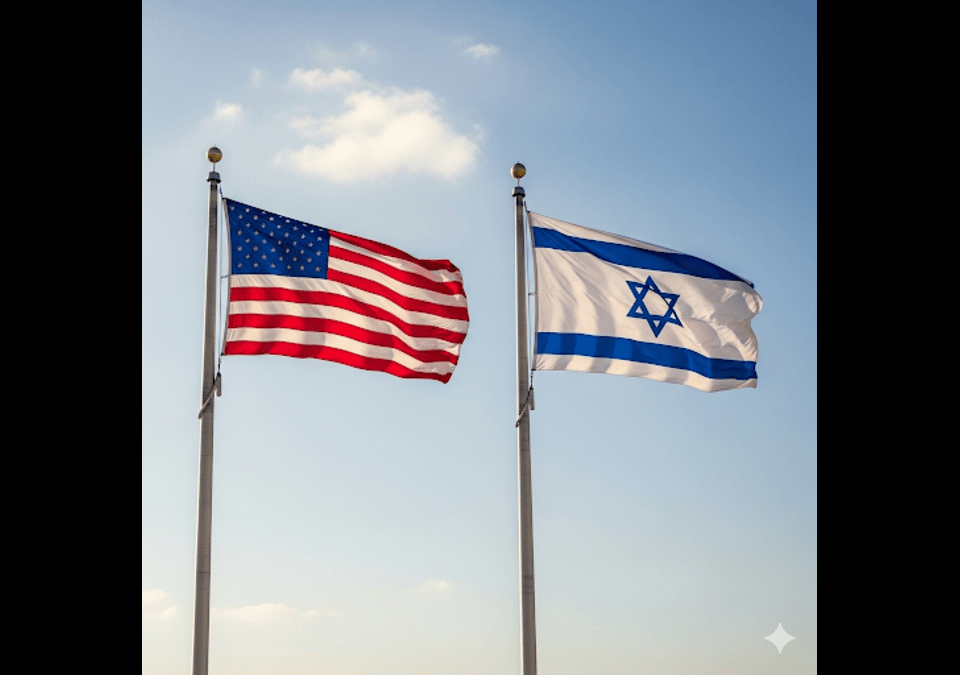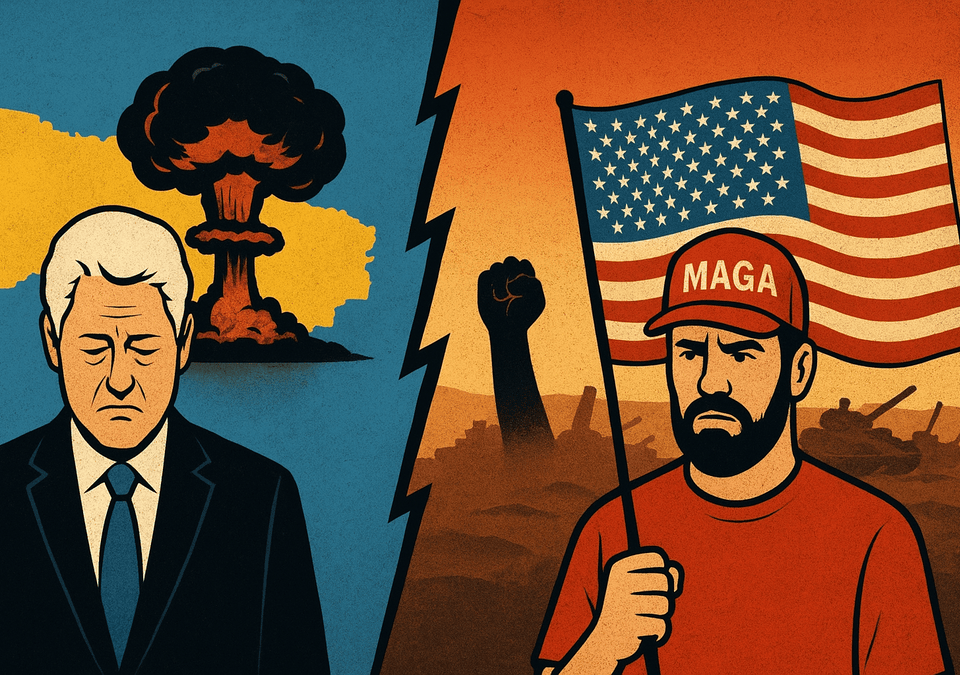
VDH Confronts WW2 Revisionist Slop
September 2, 2025
Three Former CDC Leaders: Politics Is Now Prioritized Over Science at Agency | WSJ
September 2, 2025Is Maduro The Next Noriega
The United States has recently deployed a significant naval force to the Southern Caribbean, near Venezuela. This build-up, which includes several warships, an amphibious assault group, a nuclear submarine, and thousands of military personnel, is officially framed by the U.S. government as an enhanced counter-narcotics operation aimed at disrupting Latin American drug cartels. The deployment has been met with a strong response from Venezuela. President Nicolás Maduro has publicly condemned the military presence as an act of aggression and a “hostile siege,” and has ordered Venezuelan warships and drones to patrol the country’s coastline. He has also mobilized troops to the border with Colombia and called on Venezuelan citizens to join a national militia.
While the U.S. government maintains that the operation is focused on drug interdiction, many analysts and observers view the scale of the deployment as unusually large for a counter-narcotics mission. There is widespread speculation that it is also intended as a show of force and a means of increasing pressure on the Maduro regime. The U.S. has designated Venezuela’s “Cartel de los Soles” a terrorist organization and has doubled a bounty for Maduro’s capture. Despite the heightened tensions and military posturing, most experts and officials believe a U.S. invasion of Venezuela is highly unlikely. The number of troops deployed is considered insufficient for such an operation, and analysts suggest the move is more about “gunboat diplomacy” and creating pressure on the Venezuelan government.
The situation has also drawn a response from regional allies, with Colombian President Gustavo Petro reportedly deploying troops to the shared border to support Venezuela. The U.S. military’s relationship with Latin America has long been defined by a pattern of intervention, driven by a complex mix of economic, political, and security interests. While each event is unique, certain recurring themes, particularly the use of military force against regional strongmen, connect them across decades. A striking example of this is the comparison between Operation Just Cause, the 1989 invasion of Panama to oust Manuel Noriega, and the U.S. military’s recent naval build-up near Venezuela. Though separated by over thirty years and a change in geopolitical landscape, both instances highlight a consistent U.S. foreign policy playbook that employs counter-narcotics as a key justification for actions against a formerly allied but now hostile leader.
Manuel Noriega’s rise and fall provide a textbook case study in shifting U.S. interests. Originally a paid informant for the CIA, Noriega became the de facto military dictator of Panama in the 1980s. He was a strategic asset for the U.S. during the Cold War, assisting in efforts against leftist movements in Central America. However, as his regime became more dictatorial, corrupt, and deeply entwined with drug trafficking, Noriega transitioned from an asset to a liability. The turning point came in 1988 when U.S. grand juries indicted him on drug trafficking and money laundering charges, effectively turning a covert ally into an international pariah. This indictment, a seemingly legal measure, provided a powerful, publicly palatable reason to remove a leader who was no longer serving American interests.
The most prominent parallel between the Panama and Venezuela situations lies in the public justifications for military action. In both cases, the U.S. government framed its actions as a necessary response to the drug trade. President George H.W. Bush cited Noriega’s drug trafficking as one of the primary reasons for Operation Just Cause, portraying the invasion as a vital strike in the War on Drugs. Similarly, recent U.S. naval deployments to the Caribbean have been publicly framed as an enhanced counter-narcotics mission aimed at disrupting drug flows from Venezuela. By leveraging the fight against powerful drug cartels, the U.S. can mobilize military assets under a moral and legal banner that garners broader domestic and international support. This narrative effectively conflates the goal of disrupting criminal networks with the underlying political objective of regime change.
However, a closer look reveals that the stated drug-related motivations often mask deeper strategic goals. For Noriega, the U.S. was primarily concerned with his increasingly erratic behavior, his annulment of democratic elections, and the security of the Panama Canal, which was slated to be handed over to Panama in 2000. In the case of Venezuela, the naval presence is not just about drugs; it is a tool of “maximum pressure” to weaken the Maduro government, which the U.S. has deemed illegitimate. The underlying goal in both scenarios is the removal of a hostile government and the establishment of a more favorable, democratic (or at least less-hostile) one. In this way, counter-narcotics becomes a convenient vehicle for achieving broader geopolitical ends, from securing a critical waterway to influencing the political future of a resource-rich nation.
Despite the strong parallels in motivation and justification, the situations in Panama and Venezuela differ in their execution and potential outcomes. Operation Just Cause was a rapid, full-scale invasion with “boots on the ground” that successfully captured its target. It was a swift and decisive military operation against a relatively small and ill-equipped Panamanian Defense Force. Venezuela, by contrast, presents a far more complex challenge. It is a larger country with a more formidable military and powerful international allies in Russia and China. Consequently, the U.S. has opted for a “show of force” rather than an outright invasion, relying on a naval blockade to exert pressure without triggering a potentially disastrous and protracted conflict. While the Panama playbook seems to have been dusted off, its application has been adapted to a new era of great power competition, where direct military intervention carries a much higher risk.
The parallels between the Noriega and Maduro situations are undeniable. Both show a consistent pattern in U.S. foreign policy where a once-tolerated strongman is publicly targeted under the pretense of fighting the drug trade. This narrative provides a powerful and internationally acceptable justification for a more profound political objective. While the scale of military action and the geopolitical risks are vastly different, the core strategy remains the same: use military pressure and legal indictments to destabilize and ultimately remove a government deemed hostile to U.S. interests. The ghost of Panama continues to haunt Latin America, reminding observers of a long history of intervention. For those of us old enough to remember, is it time to bring in the big speakers and blast “Let’s Dance” by David Bowie?

C. Rich is the voice behind America Speaks Ink, home to the America First Movement. As an author, freelance ghostwriter, poet, and blogger, C. Rich brings a “baked-in” perspective shaped by growing up on the streets and beaches of South Florida in the 1970s-1980s and brings a quintessential Generation-X point of view.
Rich’s writing journey began in 2008 with coverage of the Casey Anthony trial and has since evolved into a wide-ranging exploration of politics, culture, and the issues that define our times. Follow C. Rich’s writing odyssey here at America Speaks Ink and on Amazon with a multi-book series on Donald Trump called “Trump Era: The MAGA Files” and many other books and subjects C. Rich is known to cover. CRich@AmericaSpeaksInk.com
“America Speaks Ink is a Google News approved source for Opinion”





